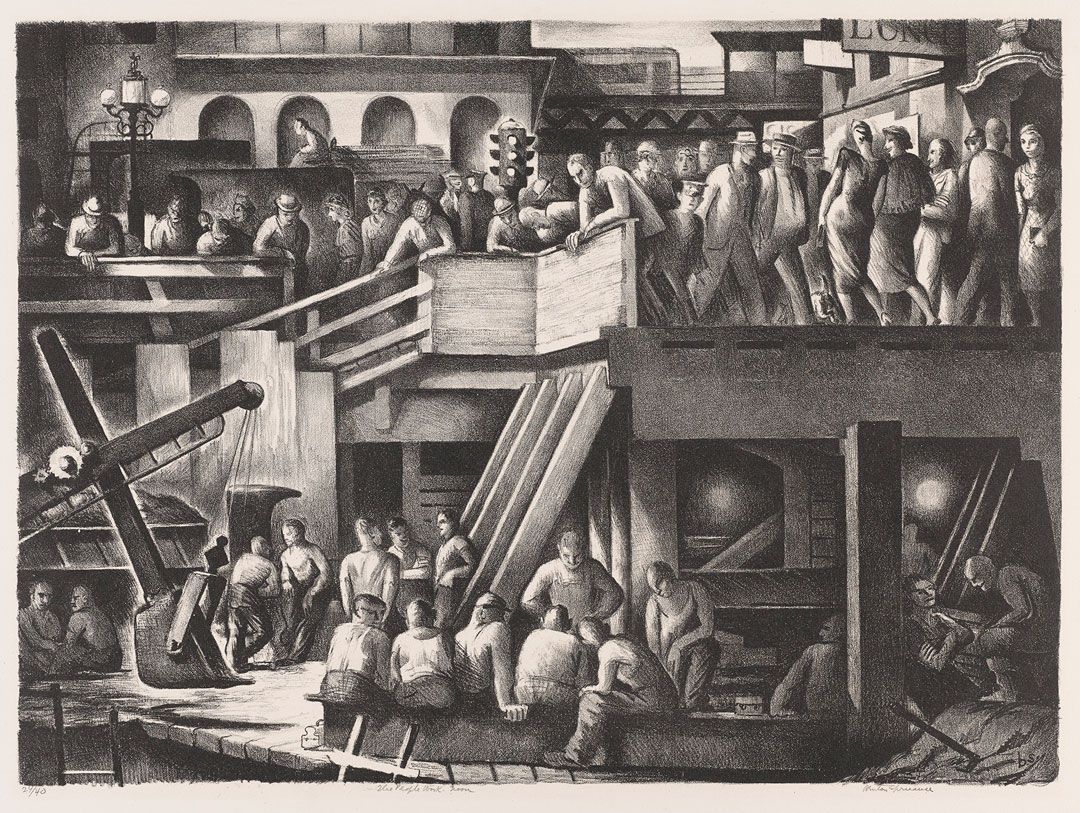Object of the Week: The People Work

But American workers did contribute at least one lasting legacy to the international movement for working-class liberation…. That holiday is May Day, not Labor Day.
– Jonah Walters, Jacobin, 2015
May Day’s origins go as far back as the ancient world, where it was a festival celebrating spring, but more recently has become a day to honor workers and the labor movement. Although the United States officially observes Labor Day in September, May Day remains a day of international significance whose beginnings can be traced back to Chicago’s Haymarket riot of 1886.
In this lithograph by Benton Spruance circa 1935, titled The People Work: Noon, the artist captures the bustling and dynamic energy of New York City at noon. One of a series of four prints by the artist, each print captures a moment in the day: Morning, Noon, Evening, and Night. In Noon, it as if we see a play in two simultaneous acts. On the bottom level, construction workers take a break from their digging and hammering to eat lunch. Sitting and standing in small groups—surrounded by I-beams, ladders, and an excavator—this moment of respite is at odds with the scene above. With an energy akin to Pike Place Market at lunchtime, the street-level scene is replete with traffic and crowds of people donning suits and dresses. The few individuals not in a rush lean over the railing to view the construction site below.
Widely considered the artist’s most successful and ambitious series, “they [The People Work] present a wealth of scenes and imagery, tied together in space and in simultaneity by various witty and ingenious devices.”[1] Indeed, by dividing Noon into sections, we are privy to the kinds of work—and leisure—that are vital to our daily lives, as well as the imagined identities of the city’s inhabitants.
Though Spruance’s juxtaposition of work and relaxation might appear straightforward, it is important to remember that the universal eight-hour workday is an element of our modern workweek, and a hard-fought battle at that. In fact, it was not until 1938 that Congress passed the Fair Labor Standards Act (FLSA), limiting our workweeks to 40 hours. And while Spruance may not have intentionally broken his series into a structure resembling the slogan of the Eight-Hour Movement–“eight hours for work, eight hours for rest, and eight hours for what you will”—it’s an important reminder this May Day.
– Elisabeth Smith, Collections Coordinator